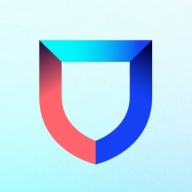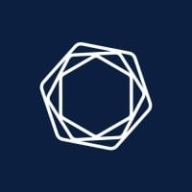


Tenable Nessus and Lacework FortiCNAPP are prominent contenders in the vulnerability management and cloud security sectors. Tenable Nessus stands out due to its robust vulnerability scanning and threat prioritization, making it a leader in traditional IT environments. In contrast, Lacework FortiCNAPP excels in cloud security with its anomaly detection and continuous monitoring, making it superior in cloud-oriented tasks.
Features: Tenable Nessus offers comprehensive vulnerability scanning capabilities, quick and effective automated processes, and in-depth reporting with threat prioritization. Lacework FortiCNAPP focuses on anomaly detection, extensive compliance checks against various security standards, and real-time insights for cloud environments.
Room for Improvement: Tenable Nessus could improve its reporting capabilities, integrations, and dashboard customization. Lacework FortiCNAPP requires enhancements in remediation features, communication about updates, and comprehensive permission management for IAM security controls.
Ease of Deployment and Customer Service: Tenable Nessus supports flexible deployment in on-premises and hybrid cloud environments, though customer service can occasionally be delayed. Lacework FortiCNAPP offers simple deployment for public clouds but faces challenges with on-premises integration, though its responsive customer service is efficient in issue resolution.
Pricing and ROI: Tenable Nessus is deemed affordable with high ROI for small to medium enterprises, though its pricing might be high for larger deployments. Lacework FortiCNAPP's pricing reflects its advanced cloud capabilities and may be seen as high but offers justified investment benefits for cloud-centric security needs.



Zafran Security integrates with existing security tools to identify and mitigate vulnerabilities effectively, proving that most critical vulnerabilities are not exploitable, optimizing threat management.
Zafran Security introduces an innovative operating model for managing security threats and vulnerabilities. By leveraging the threat exposure management platform, it pinpoints and prioritizes exploitable vulnerabilities, reducing risk through immediate remediation. This platform enhances your hybrid cloud security by normalizing vulnerability signals and integrating specific IT context data, such as CVE runtime presence and internet asset reachability, into its analysis. No longer reliant on patch windows, Zafran Security allows you to manage risks actively.
What are the key features of Zafran Security?
What benefits can users expect from Zafran Security?
In industries where security is paramount, such as finance and healthcare, Zafran Security provides invaluable protection by ensuring that only exploitable vulnerabilities are addressed. It allows entities to maintain robust security measures while allocating resources efficiently, fitting seamlessly into existing security strategies.
Lacework FortiCNAPP provides robust cloud security, combining vulnerability management and multi-cloud insight with user-friendly controls, machine learning detection, and compliance support.
Lacework FortiCNAPP specializes in cloud security by merging machine learning anomaly detection with agent-based vulnerability management to offer detailed alerts and compliance reports. Its comprehensive approach allows continuous monitoring across AWS and Kubernetes, providing insights from an attacker's perspective. The platform offers automation and seamless Slack integration, facilitating collaborative and efficient cloud security management. Users value its ability to handle multi-cloud environments and scan IAC scripts, configurations, and compute nodes across AWS and GCP.
What are the key features?Organizations across sectors leverage Lacework FortiCNAPP for cloud security, focusing on compliance, security posture, and vulnerability management. It is widely used for monitoring AWS and Kubernetes environments, scanning IAC scripts, configurations, and securing compute nodes. It supports multi-cloud security posture management and log ingestion, enabling companies to maintain strong cloud infrastructures without dedicated security layers.
Tenable Nessus provides an efficient vulnerability management system with swift deployment and comprehensive scanning capabilities, making it an ideal choice for organizations seeking to enhance their security posture through effective threat detection and mitigation strategies.
Renowned for its top-tier vulnerability detection, Tenable Nessus offers a robust platform that integrates effortlessly across systems, enhancing threat management through automation, real-time monitoring, and customizable scanning options. Its broad asset coverage, including network devices and applications, coupled with ease of deployment, positions it as a go-to option for risk assessment and compliance. Organizations value its extensive reporting features and database, although they suggest enhancements in reporting formats and false positive detection. A more intuitive interface, improved cloud support, and competitive pricing models are sought after to cater to evolving enterprise needs.
What are the key features of Tenable Nessus?In industries such as finance, healthcare, and tech, Tenable Nessus is implemented for scanning internal and external networks, identifying risks, and ensuring data protection compliance. Organizations conduct regular scans to detect security vulnerabilities in servers and databases, leveraging its capabilities to strengthen their security frameworks while managing cloud infrastructures and enterprise networks efficiently.
We monitor all Vulnerability Management reviews to prevent fraudulent reviews and keep review quality high. We do not post reviews by company employees or direct competitors. We validate each review for authenticity via cross-reference with LinkedIn, and personal follow-up with the reviewer when necessary.